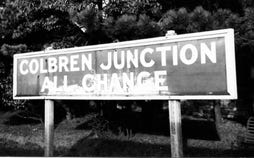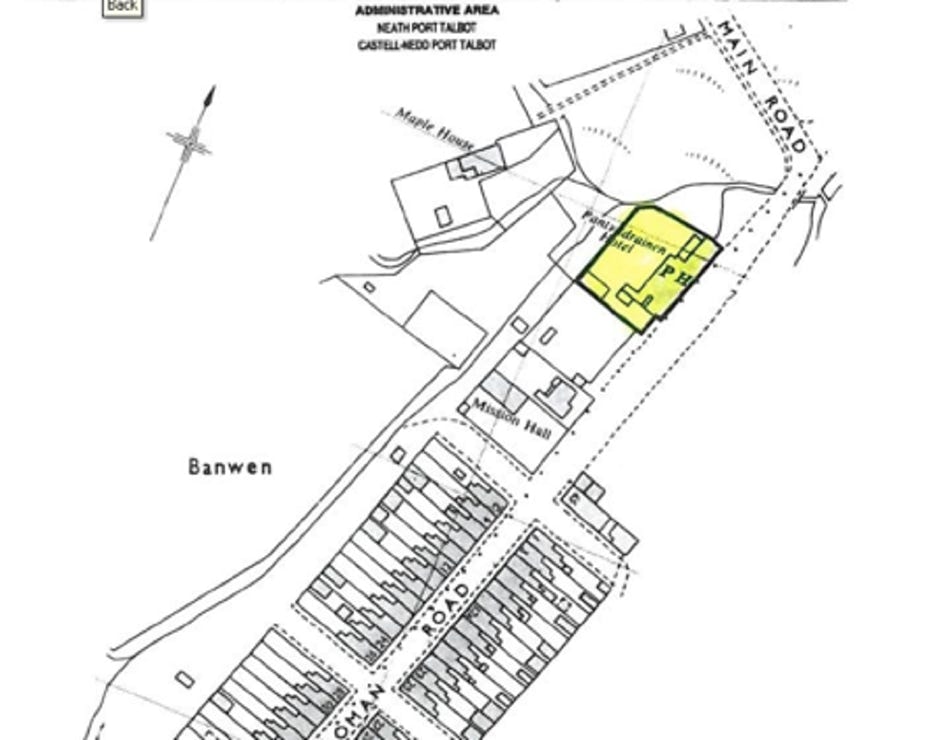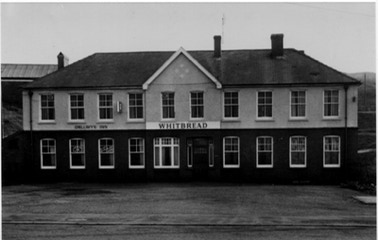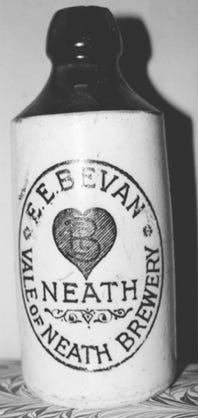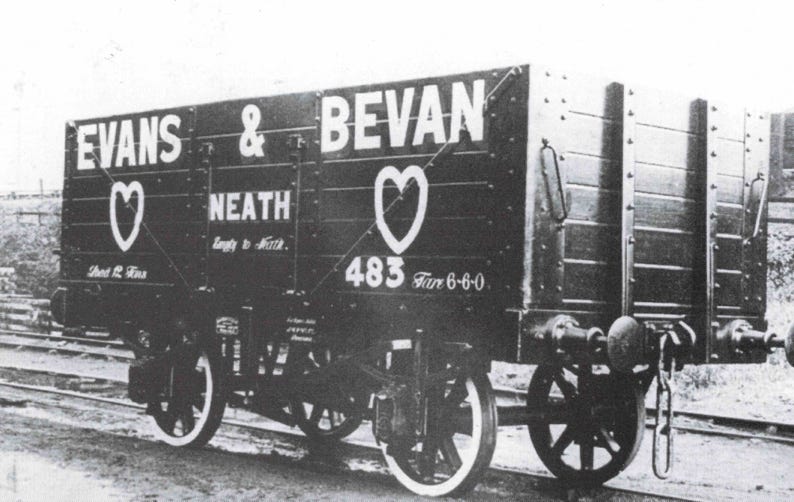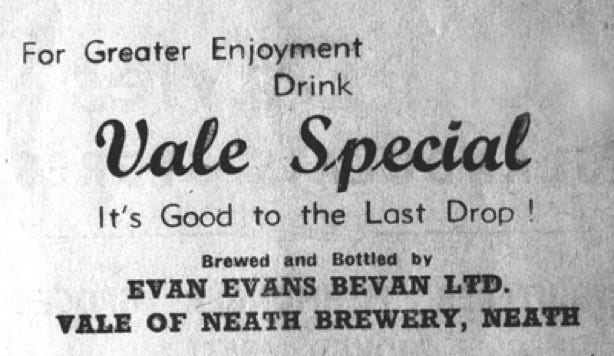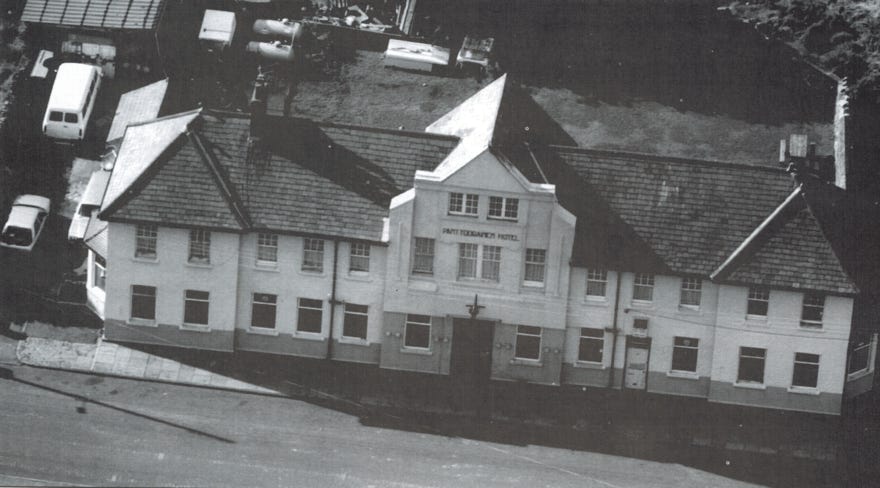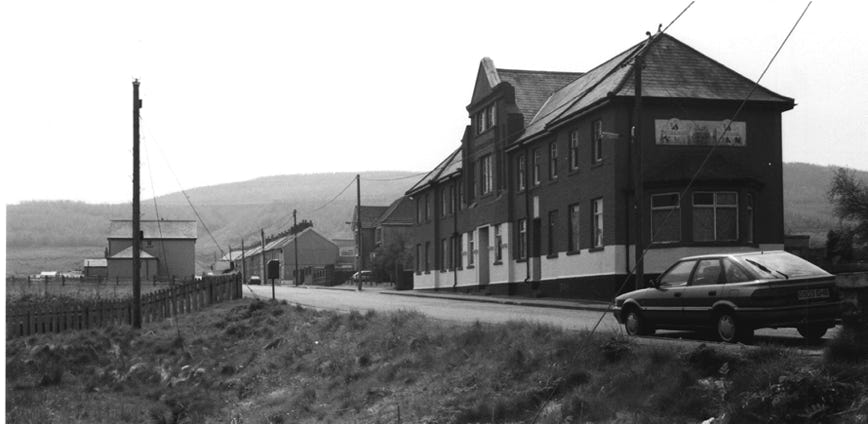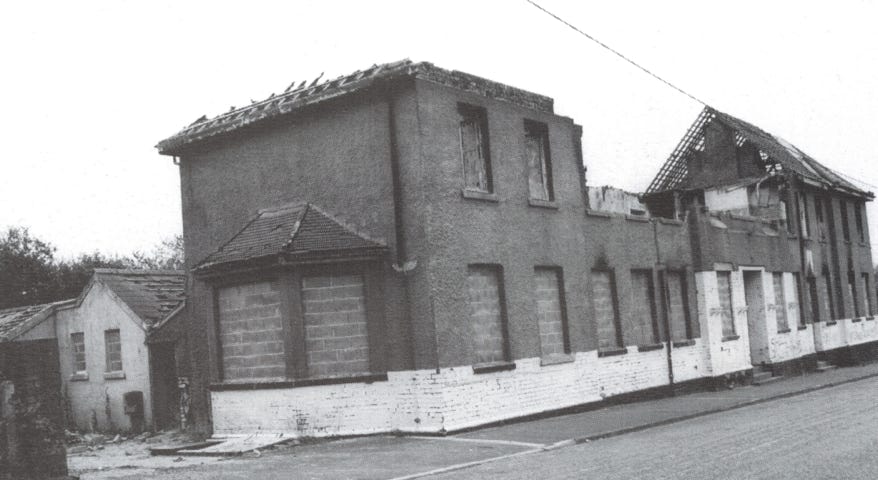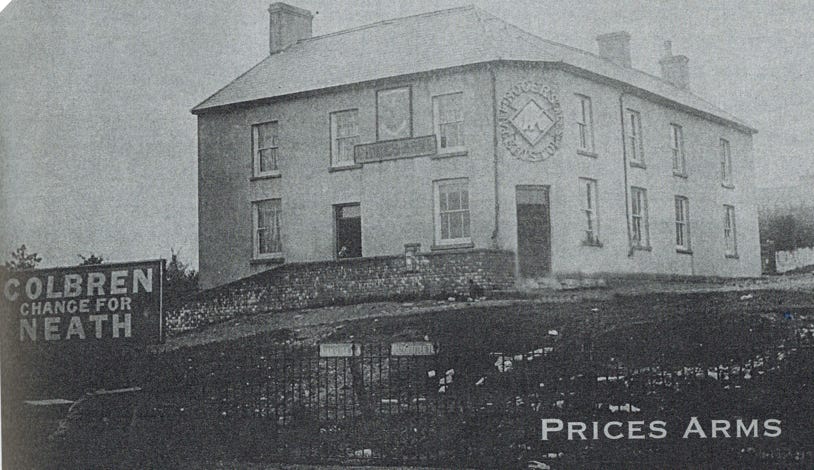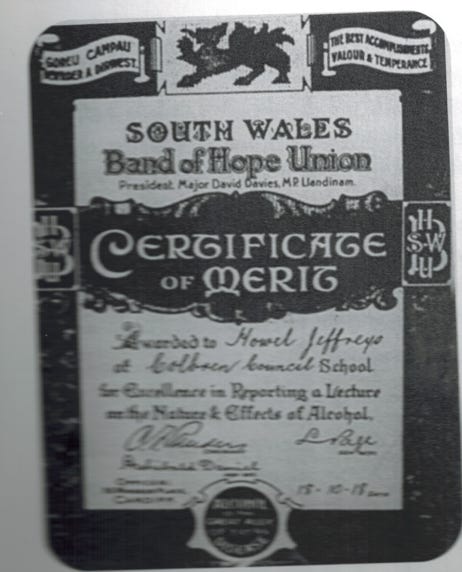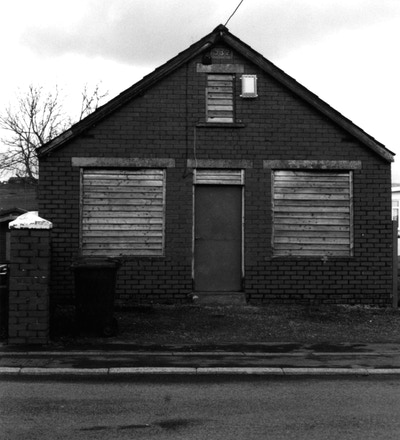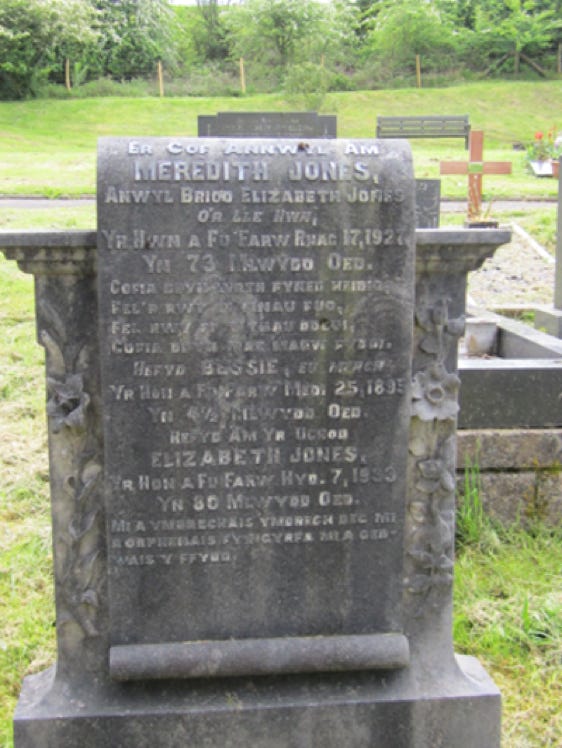The Price’s Arms shown here in 1871 was, however, originally located on the site of what is now (or was) the Ashgrove Inn at Coelbren, some distance from its current location. At some point in the late 1860s – maybe after the first passenger train stopped at Coelbren in 1867 and perhaps anticipating the upgrading of the simple halt to a junction - the Price’s Arms was re-located next to the station, at the bottom of the eponymous Station Road, where it still stands and continues to operate as a public house. Gwenllian Evans is recorded there for the next twenty years – in both 1881 and 1891 censuses, although changes to the name Phillips in these censuses after the death of husband Moses Evans. Before his death, the couple appears to have had five children: two of these are of interest to us as, again, the Evans family forms the centre of another marriage triangle between our Jones and Morgan families. Through these and many other marriages we have seen so far, the village and environs was truly becoming a very tangled network of cousins and in-laws. A diagram exemplifies the situation in the last quarter of the nineteenth century.
Firstly, Daniel Evans (1855-1929) married Sarah Morgan of the Coelbren House family, in 1877. This would link the Morgans and the Evans.
Secondly, and of immediate interest here to our Jones family, is the second marriage of the Evans Price’s Arms family, of daughter Elizabeth Evans, who married Meredith Jones (1854-1927) not long after on the 18th January 1879 at the Neath Register Office. For the next twenty years, Meredith appears to have worked as a collier; the couple lived in colliery rows around Onllwyn and had their children. By 1901, the family moved to Blaengarw, another little town at the head of a valley, where the family of eight plus two boarders is recorded at No.1, Blaengarw Road. This is a little distant from the Coelbren area. The family is recorded again in Blaengarw in 1911, where Meredith, aged 56, is recorded as a “Billiard Marker”. This meant he worked in a billiard hall, sometimes acting as a scorer, but otherwise attending to general duties such as serving drinks, replenishing supplies and generally keeping the place in order. This certainly constituted a move away from the colliery. Meredith is also said to have built the first billiard hall back in his home area, as part of the new village of Dyffryn Cellwen, in 1911 (Evans, 1977). Certainly this family shows a different trajectory to those so far seen of Meredith’s brothers and sisters. Meredith’s name also pops up as a member of the local Banwen recruitment committee at the beginning of the First World War (mentioned in Llais Lafur).
Meredith Jones and family appear to have returned to Onllwyn by the early 1920s as Gwilym Jones (Coelbren House, 1925-2021) recalls (in 2014) that his father, a miner originally from North Wales, came coincidentally to lodge with this family at Onllwyn around 1925. Having established himself, he sent to Mountain Ash for his wife and young family – including the baby Gwilym – to join him. Despite their landlady’s entreaties for all of the young family to continue lodging with them, Gwilym’s mother could not accept – Elizabeth Jones was a strict Sabbatarian and would not allow any work, including the washing of babies’ nappies, on a Sunday. Gwilwm says that he therefore knew this Jones family well before he actually married into it thirty years later.
In the 1921 census, 67 year old Meredith is recorded resident at ‘Duffryn Road’, Onllwyn, occupation Greengrocer. Resident with him are his wife, Porth born Elizabeth (Evans), and a 15 year old servant Eleanor Lloyd, working at Tan y Bryn cottage, Onllwyn.
